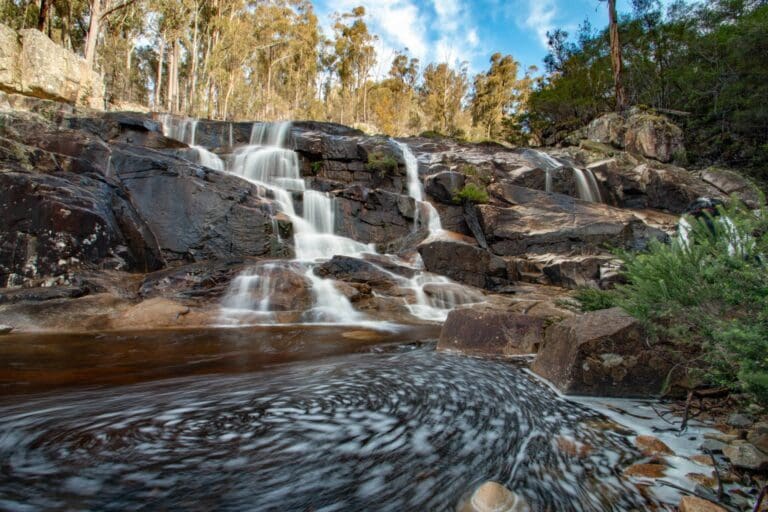Trail Fast Facts
Strzelecki Peaks Flinders Island is a 6.2km, grade 4 hike in Strzelecki National Park, Tasmania. This hike typically takes 3 hours to complete.
Hike Overview
The large granite massifs of Strzelecki National Park dominate the southern part of Flinders Island and offer amazing views.
Highlights
The spectacular Devonian granite forms part of a much larger series of granite bodies extending from north-eastern Tasmania to Wilsons Promontory in Victoria. These granite massifs formed during a major continental collision in eastern Australia, approximately 370 million years ago.
Track Grade
Grade 4 (Hard) - Challenging Walks for Experienced Walkers: Grade 4 on the AWTGS signifies challenging walking tracks. Bushwalking experience is recommended for these tracks, which may be long, rough, and very steep. Directional signage may be limited, requiring a good sense of navigation. These walks are suited for experienced walkers who are comfortable with steeper inclines, rougher terrain, and potentially longer distances.
Tips
Park entry fees apply. Fees can be paid at Service Tasmania in Whitemark. Annual pass holders should bring their 'Annual all parks card' to Flinders Island.
Nearest facilities are located 3.5km away at Trousers Point.
Steep uphill walk requiring physical exertion. However, there is nothing technically difficult about the walk. The walk starts at an elevation of 20m and finishes at 756m.
Supervise children, hazardous cliffs, unprotected track edges, suitable clothing essential, this track should not be walked during periods of high fire danger.
No pets, firearms or bicycles.
Map and GPX file
Max elevation: 732 m
Min elevation: 13 m
Total climbing: 763 m
Total descent: -764 m
For more information about this hiking trail please visit Parks and Wildlife Service Tasmania
Trail Location (trailhead)
Sorry, no records were found. Please adjust your search criteria and try again.
Sorry, unable to load the Maps API.
Getting there
From Whitemark, travel south (towards Lady Barron) on road B85 and turn into road C806. The track to the peaks starts 12.5km from Whitemark.
Photo gallery
If you have any photos from this hike and are happy to share them, please upload your .jpg files here.
Please note: Uploading photos does not transfer ownership of copyright away from you. If requested, you will be credited for any photos you provide and can ask they be deleted at any time.
Similar trails nearby
Explore Safe
While planning your hike, it’s important to check official government sources for updated information, temporary closures and trail access requirements. Before hitting the trail, check local weather and bushfire advice for planned burns and bushfire warnings and let someone know before you go. Plan ahead and hike safely.
Let someone know
Adventure with peace of mind: Fill out your trip intentions form. Before you hit the trail, fill out an online form to privately send important details about your hike to your family or friends. If you don’t return on time, they can easily alert emergency services, preventing worry and ensuring a swift response. Hike with peace of mind and enjoy your outdoor adventure to the fullest. Be smart, be safe: Register your plans here.
Gear to consider
What you carry in your pack will depend on the weather, terrain, time of year, type of adventure, and personal preferences. Having trouble deciding what gear’s right for you? My free planning, food and packing checklists provide an introduction to things your could consider (as well as the Ten Essentials) on your day, overnight and multi-day adventures. Customise your kit according to your personal needs, always considering safety first.
Suggest an edit
Trail changed? New features discovered? Has the route changed? Trail permanently closed? Help fellow hikers by suggesting edits! Click above to update route descriptions, GPX file, trail features (like boardwalks), or access conditions (like parking availability). Help me keep the trails info fresh!
Weather
Acknowledgement of Country
Trail Hiking Australia acknowledges the Traditional Owners of the lands on which we hike and pay respects to their Elders, past and present, and we acknowledge the First Nations people of other communities who may be here today.












3 Reviews on “Strzelecki Peaks Flinders Island Hike (6.2km)”
Donna Rayner
Matt Baker